The Current State of Account Abstraction | Holdstation
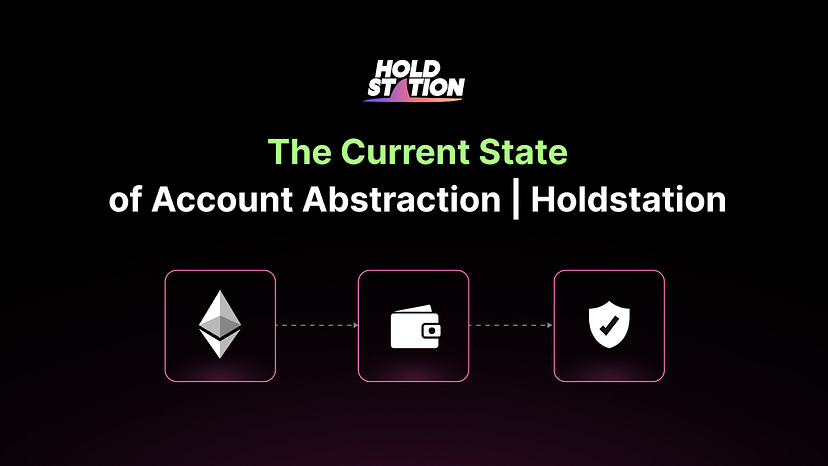
In a previous article, we introduced Account Abstraction’s potential to drive blockchain adoption. Despite its numerous possibilities, why hasn’t it been widely adopted yet? This article will help you to answer that question, as well as give you an overview of Account Abstraction’s current state.
Quick Overview
Account Abstraction (AA) simplifies how users interact with the blockchain. It achieves this by merging Externally Owned Accounts (EOA) and Contracts into one simple Smart Contract Wallets.
This innovation offers a two-fold benefit: a more streamlined user experience and moving heavy-duty tasks out from the main protocol to the EVM. With that being said, AA not only enhances the efficiency of interactions but also sets the stage for a more versatile and adaptable blockchain ecosystem.
However, the adaptation of AA currently still has drawbacks. The deployment cost for AA is relatively high, along with the need to use relayer services (often centralized) to submit the transactions. This results in diverse custom implementations to achieve the ultimate goal: the blockchain mass adoption.
The Implementation of AA
Years after Vitalik Buterin introduced the idea of ‘Abstraction’, finding the best way to use Account Abstraction remains a big question.
Proposals throughout the year
In 2018, smart contract wallets were created to keep user assets safe. This allowed for social recovery and on-chain fraud monitoring without needing a third party to hold the assets.
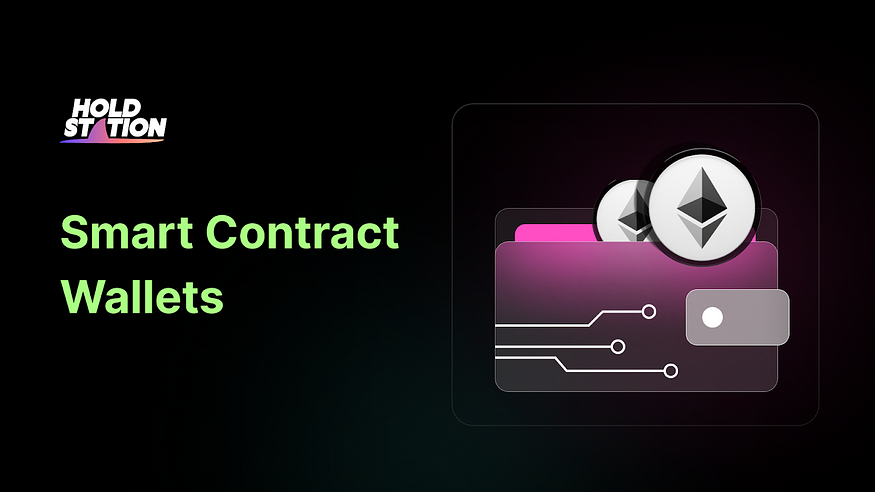
In 2020, a new proposal was introduced (EIP-2938) that allowed smart contracts to work like top-level accounts. Then came EIP-3074 and EIP-5003, which made regular EOAs act like smart contracts, giving users the ability to control their EOAs to smart contracts.
However, these changes eventually need a hard fork, which might not happen soon due to other priorities. Therefore, these options were not very welcomed.
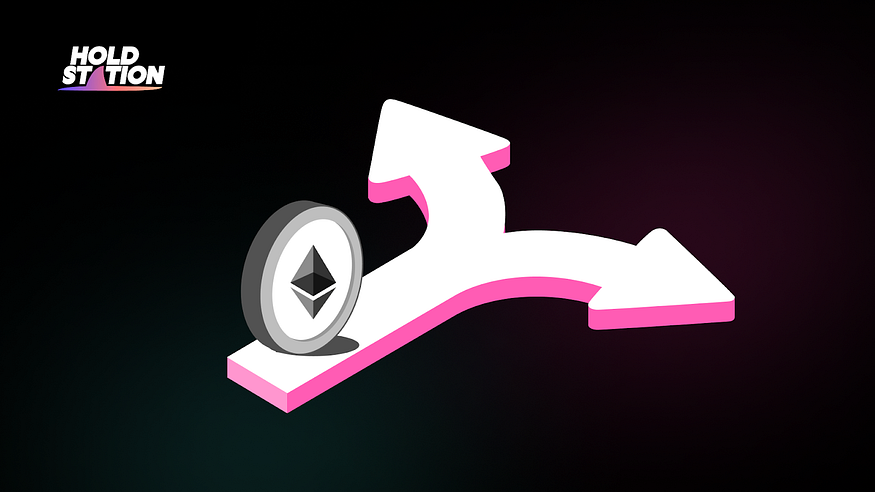
EIP-4337 and ERC-4337
In 2021, EIP-4337 was proposed to the Ethereum roadmap. It gained broad support because it brought account abstraction without major protocol changes. This customizable, more scalable, and secure approach made a significant impact, aligning with AA’s potential for ‘mass adoption’ of blockchain.
From this, ERC-4337 emerged from the EIP-4337 proposal as a new Ethereum standard. It primarily focus on creating standards for protocol specifications and development methods, transforming user accounts with enhanced smart capabilities.
Paymaster mechanism
The inclusion of Paymaster within ERC-4337 marks a significant stride towards making blockchain more user-friendly and accessible. This decentralized mechanism goes beyond, allowing users to cover gas fees using ERC-20 tokens instead of ETH, or even seek third-party sponsorship for their gas fees.
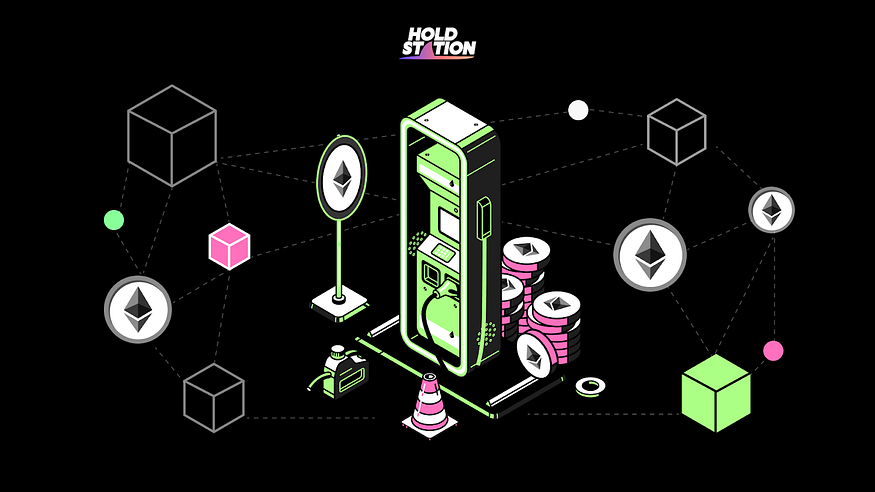
Challenge with ERC-4337
In the end, there’s still one remaining challenge with ERC-4337: Users with EOA-based wallets might need to transfer assets to new contract accounts. Traditional EOAs can’t be upgraded, potentially causing a complex and costly process due to high gas fees.
That’s why innovative smart contract wallets (such as Holdsation) are in a race to provide a seamless user experience by adopting AA advancements. This streamlines processes, and eliminates previous constraints, thus making blockchain interaction and user experience simple.
Recent statistics
AA on blockchain
In the past 2 months, monthly users of Account Abstraction have notably surged, hitting a new all-time high of 492,102.
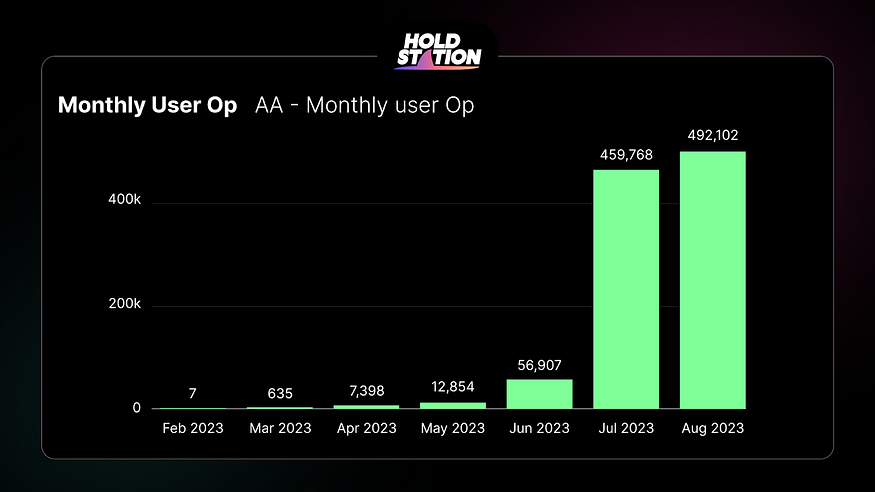
This achievement is quite foreseeable, considering the introduction of ERC-4337 and the remarkable features it has introduced. Along with that, The Paymaster mechanism has demonstrated substantial enhancement, evident in the sponsorship of gas fees exceeding $248k in recent month.
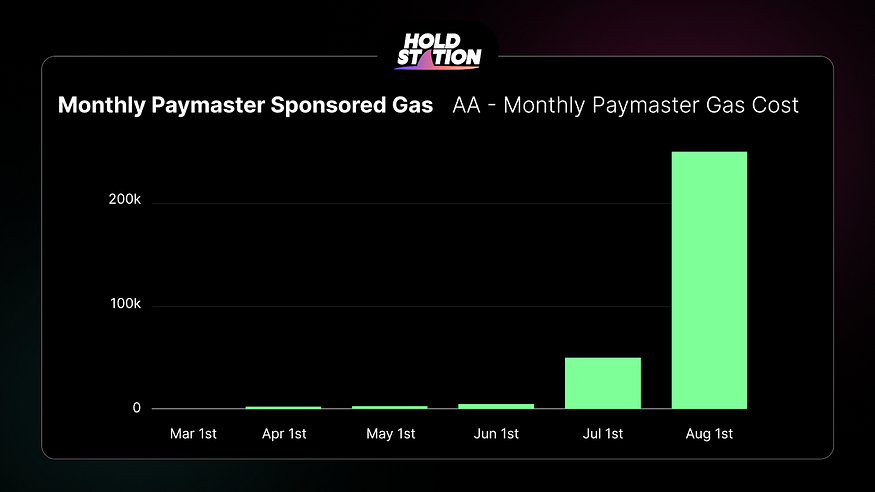
These positive trends in user adoption and usage indicate a strong embrace of Account Abstraction’s capabilities, and also reflect both an acknowledgment of its strengths and potential to transform and reduce the complexity of blockchain interaction.
AA on Holdstation
On Holdstation, Paymaster is also integrated. Its convenience extends to enabling gas fee payments in $USDT or $USDC, and moreover, more tokens may be greenlit in the future. Your gas will also be sponsored if trading volumes reach a certain amount, which helps you save tons of gas fees while using our DEX.
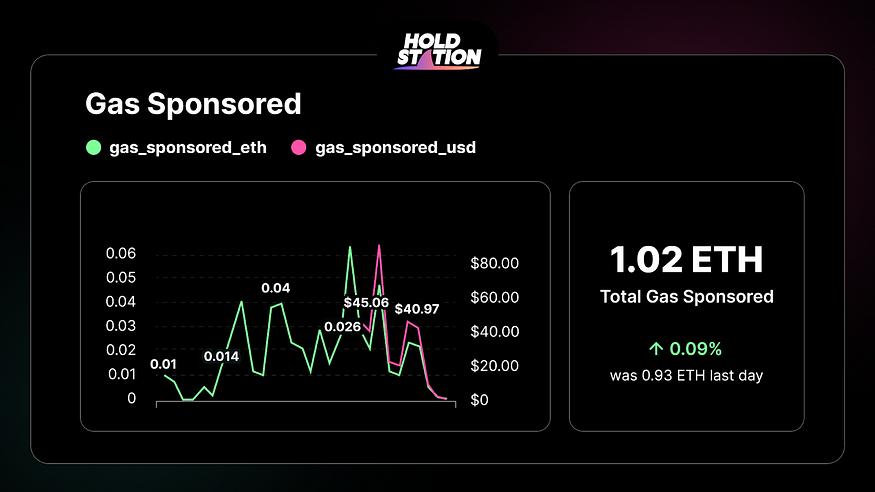
In just under three weeks since its launch, Holdstation Defuture ( Holdstation DEX) has sponsored over 1 ETH worth of gas, pointing to a promising future for this unique feature.
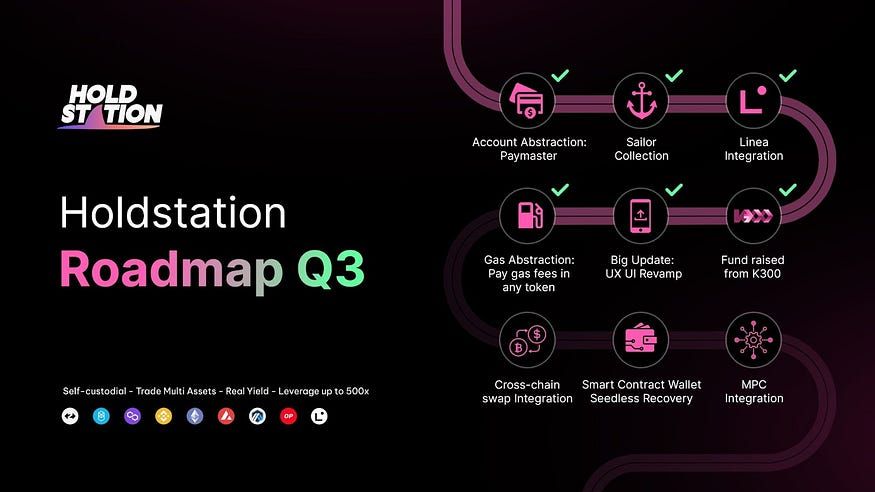
Our roadmap includes significant AA integration updates. This encompasses cross-chain swaps, Seedless Recovery, and MPC Integration, elevating your Holdstation wallet experience. Stay tuned for these enhancements.
Conclusion
In conclusion, the present state of Account Abstraction, notably with the integration of ERC-4337, marks a significant milestone in the evolution of blockchain usability. This implementation underscores the industry’s dedication to providing accessible and user-friendly blockchain solutions.
Holdstation, our project, stands as one of the pioneers in launching this feature on zkSync, and we’re witnessing positive outcomes from AA adoption. This encouraging progress fills us with satisfaction and optimism for the promising future that AA could bring to the blockchain landscape, and how significant it could influence our performance also.
Your Gate to Web3 💜🦈
Holdstation Homepage: https://holdstation.com
Holdstation Official Links: https://link3.to/holdstation
